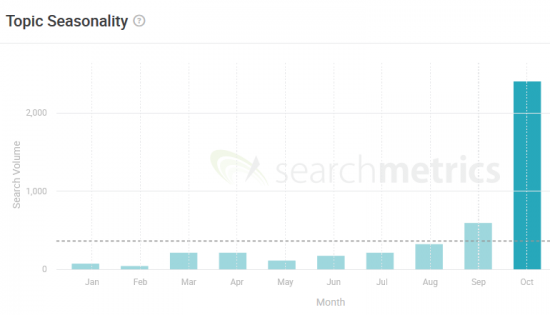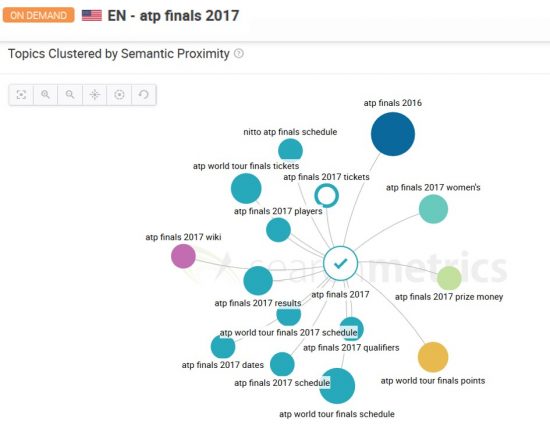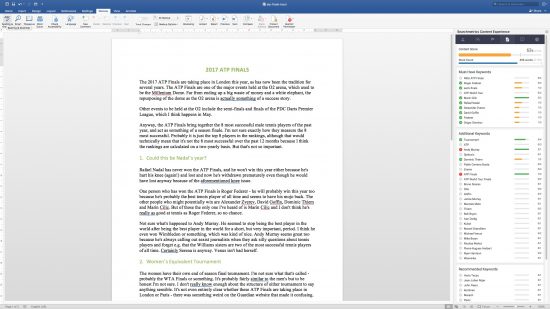Content is like pizza. Everyone says they love it, but any particular piece can vary a lot. Few want a pizza that’s gone cold by the time it’s delivered and even fewer want content that’s lost its freshness by the time it’s ready for publication. Read on to find out how to generate fresh content that’s guaranteed to get your readers’ taste buds tingling – and be gobbled up by search engines.
“BREAKING NEWS!”
In our media-swamped environment, it’s not just cable news anchors who love to yell “BREAKING NEWS” at every possible opportunity.
Online, being one of the first outlets to be picked up by Google’s (News) crawler for a certain topic will obviously give you an edge when looking to attract people searching for the latest information. This justifies the scramble on newsdesks around the world to get stories loaded from the wire into their content management systems and jazzed up with an eye-catching image as quickly as possible.
But – by its very nature – news can only be breaking for so long. A much more sustainable content strategy, particularly for most sites with names that aren’t “AP”, “Reuters” and “twitter.com/realdonaldtrump”, is to provide content that’s relatively fresh, but on topics that nevertheless have some kind of extended traction. An example would be the end-of-season tournament in men’s tennis, the ATP Finals. More specifically, the 2017 ATP Finals.
The tournament itself ran from November 12–19, but, as the search volume seasonality shows, audience interest grew slowly from June thru September, and really exploded in October.
For terms like this, anyone using average monthly search volume (as is available in tools like Google’s Keyword Planner) to guide their strategy is wasting their time. The only meaningful traffic will come in the month or months when your audience is interested. This is what your content marketing strategy has to reflect.
Yesterday’s data won’t perform today
One huge challenge content marketers face when creating content for a new topic is that it’s hard to get any useful data. No database in the world (besides Google’s own index) can automatically include everything as soon as it’s picked up by the Googlebot, which logically means that things will have lost at least some of their freshness by the time a search database has incorporated them.
Until now.
With the “on-demand brief” feature of the Searchmetrics Content Experience, content planners can now pull up real-time data on any keyword they can think of, replete with all the insights needed to define a fully-fledged content brief. This is what your writers need, not just to create not just great content, but to create content that search engines will love too.
The data in the on-demand brief lets you check the characteristics of pages that are ranking for up-to-the-minute topics and optimize your content accordingly. You don’t have to dig out your landing page about the 2016 Finals and hope that the same criteria will help this year’s text rank – you have the data you need to produce content that will rank in 2017.
Speeding up workflows
A second challenge with attempting to create new content that picks up a topic at the moment people start searching for it is turnaround times. Depending on how content marketing is structured in an organization, a content manager or online marketer may not work with in-house content creators, but will often call on a contracted content writer to create the text. This means issuing a brief and can often require considerable back-and-forth before a blog post is ready to go online.
Every misunderstanding in the brief, every redrafting or revision of the text costs time and can delay publication. What is worse, with topics that are supposed to be fresh, new blog posts and articles are being picked up by search engines all the time, so long delays will increase the data gap between your brief and the actual competitive environment.
Quick turnaround is therefore essential and anything that speeds up workflows can make a vital contribution to success. One great way of slowing down your contract writers is making them use a tool or piece of software they’re not familiar with. You take them out of their comfort zone and everything will take them three times as long. But, if you want them to write predictably successful content, then they need to use the Searchmetrics Content Experience, right?
Right.
You can square this circle by providing your content writers with the Word add-in that lets them access all the topic and keyword data they need, without giving up their spellchecker, format templates and customized keyboard shortcuts.
This saves them time, saves you time, and can dramatically speed up publication.
Coordinating writers for real progress
Another thing that can cause a real drop in freshness is when your writers don’t sync up properly during the content creation process. Even a shortish blog post may have more than one person working on it, and it can be a content marketing nightmare bringing the different chunks together, assessing what should go in and what should go out. Particularly when deadlines are tight, this can be a rushed, messy task, and time constraints can force decisions that may both diverge from the original plan. This might be a decent strategy for getting things published, but it isn’t the way to generate compelling, quality content.
One feature of the Searchmetrics Content Experience that helps tidy up this mess is the Version History. This lets anyone with access to the content view how it has progressed, with the development of the Content Score instantly comparable between different versions.
If a content revision has been made, the content manager can see if the writer has just added meaningless waffle to pad out the word count, or if there has been genuine benefit to the Content Score. A writer who improves the text gets credit for it – and a content manager can see exactly what the improvements have been made. All this speeds up the time it takes to go from first draft to high-quality content piece that’s ready for publication.
It may sound stale but efficient workflows keep content fresh
Fresh content doesn’t have to rely on an Oval Office insider leaking to you live from a Pentagon security briefing. You can create content that is relevant today if your workflows are focused on efficiency, and your performance metrics are based not on guesswork or projections from past results, but on genuine live data pulled directly from the SERPs. Going back to my pizza analogy, having live data is like having the freshest ingredients, but you also need the right workflows in place to make sure your content is still piping hot when it hits the plate.


 Image Source
Image Source


